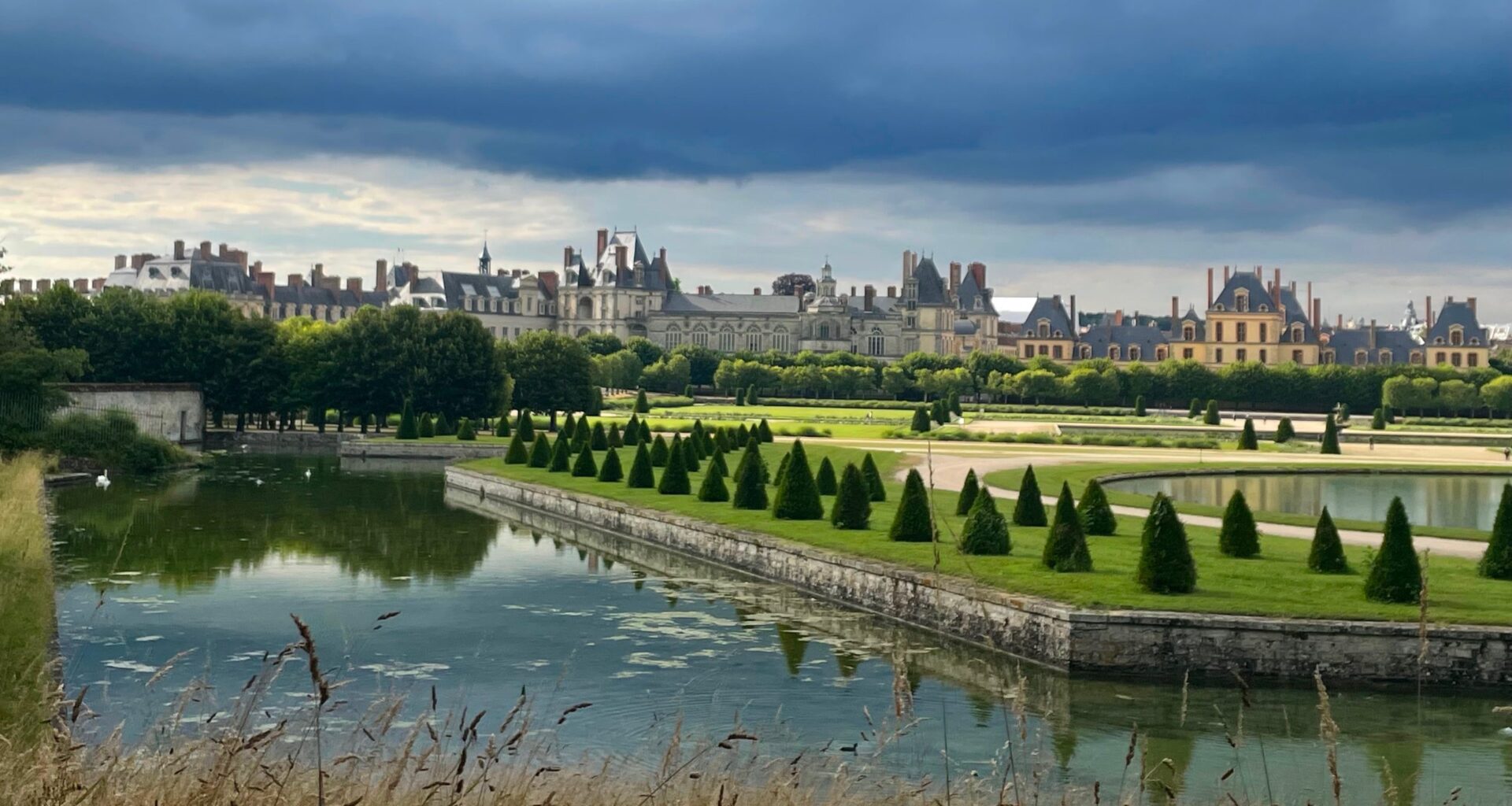Travel notes from the real France. Carnet de Voyage is a weekly personal travel story in France sent in by readers. If you’d like to write a story for Carnet de Voyage, head here for details on how to submit.
Fontainebleau was the world’s first forest protected not for what it produced, but for how it made people feel. I count myself lucky to be one of the many drawn in by that feeling.
In July 2024, I moved to a small town, also called Fontainebleau, set inside the forest – a forest that’s anything but small, stretching nearly twice the size of Paris. It quickly became part of my daily life.
The first time I wandered in, under my feet I found something I hadn’t expected to find in the middle of France: sand. Fine, pale, and soft underfoot. The sand base to the forest’s 1500km of trails. That alone was unusual; turns out it’s valuable, too.
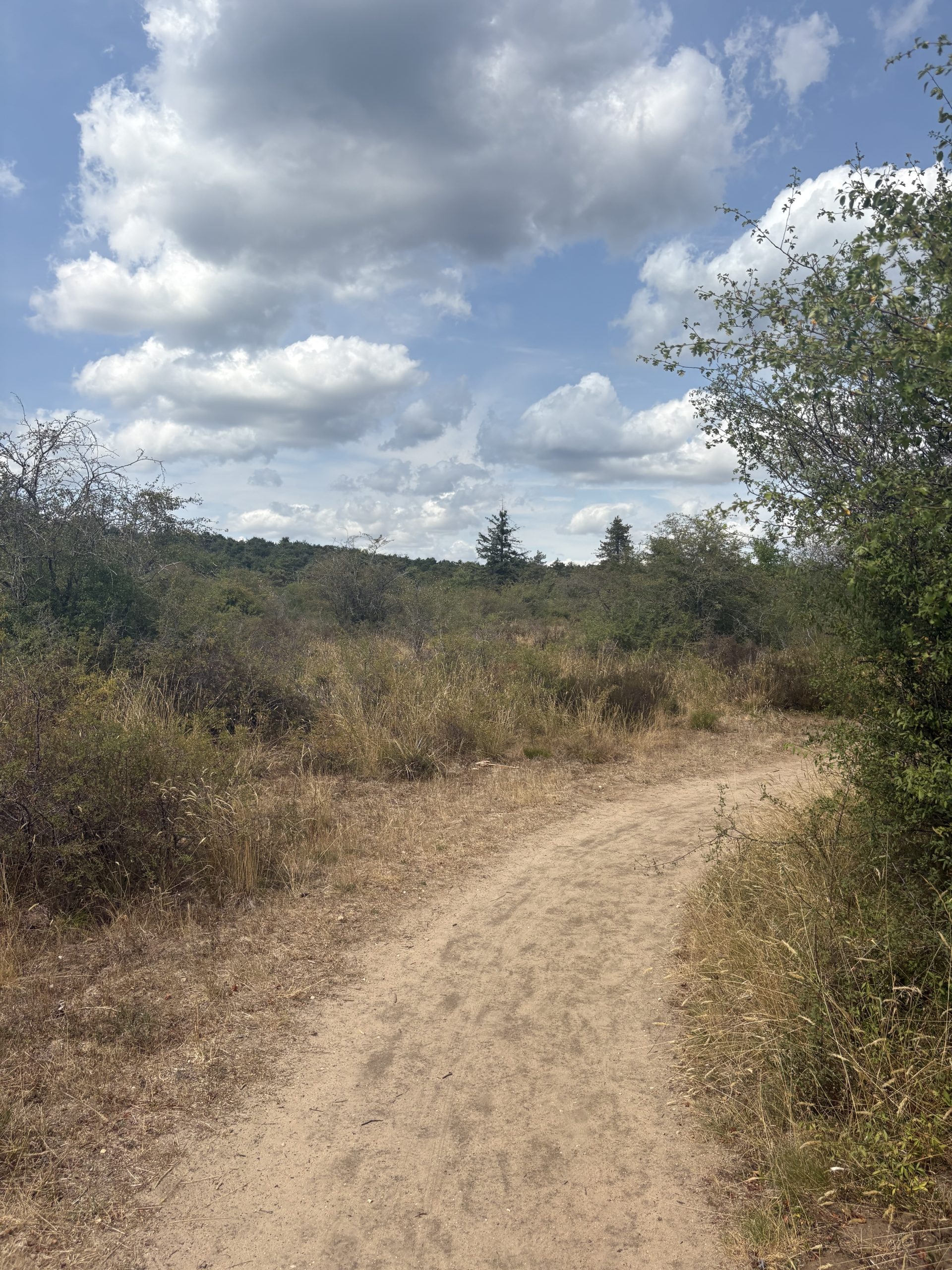
The sand base to the forest’s 1500km of trail © Jen Flanagan
This sand is over 99% silica, among the purest naturally occurring sand in the world. It’s used to make ultra-clear, low-iron glass. Or in other words, some of the best glass you can get. Architect I. M. Pei sourced Fontainebleau sand for the glass in the Louvre Pyramid.
As I spent more time exploring the forest’s trails, I noticed something else unexpected: enormous rocks, dotted with shallow craters, their surfaces worn smooth, and almost soft feeling, if that’s possible for a rock. Later I learned they are sandstone, formed when this region was underwater during the Ice Age. Over time, the rock eroded into the massive, rounded shapes scattered across the forest like ancient sculptures. One is even shaped like an elephant, aptly called “l’Éléphant.”
Today, these rocks make Fontainebleau one of the world’s top bouldering destinations, with over 30,000 climbing routes. It also explains the steady stream of folks in town with thick mats (bouldering pads) strapped to their backs like turtle shells.

L’Eléphant rock © Jen Flanagan
The forest’s unique logic doesn’t stop there. Every few hundred meters, the trees open into wide, circular clearings, with straight paths radiating outward like spokes on a wheel. The symmetry is too perfect to be natural… and it isn’t
These intersections were engineered for royal hunts. In early modern France, hunting was what golf is today: ritual, sport, and status. The forest was shaped to support it: long, straight paths for speed on horseback, undergrowth cleared so riders and their loyal hounds could see their prey. Even today, many trees still bear the marks of that design, with trunks left bare below a certain height.
At the forest’s edge stands the Château de Fontainebleau, which began as a royal hunting lodge and grew into one of France’s most important palaces. Kings would ride directly into the woods from its gates. Many of the château’s paintings and tapestries still depict scenes of la chasse (the hunt).
Some parts of the forest were designated faisanderies, where faisans (pheasants) were bred to keep game plentiful. One section of the forest is still called La Faisanderie. All of it, quiet echoes of its royal past.
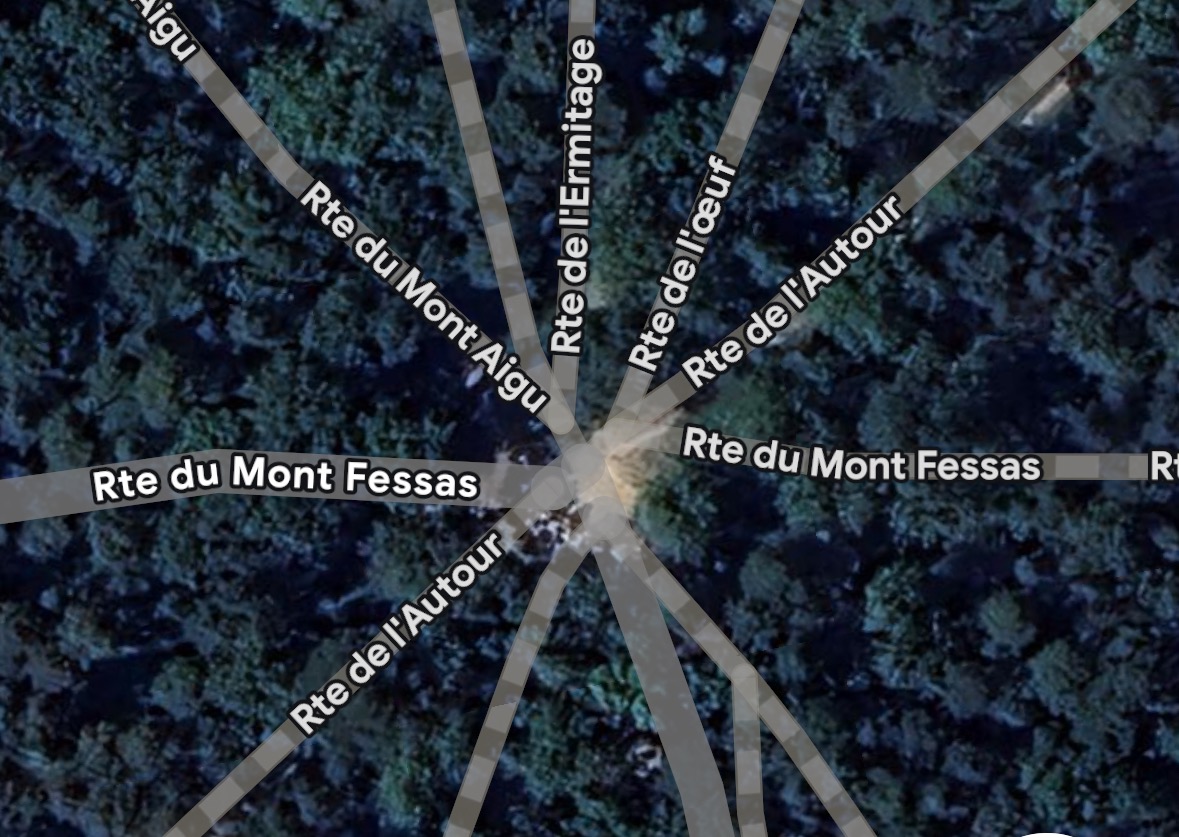
Google Map view of one of the many ‘intersections
Even now, those same paths shape how you move through the forest. One minute you’re deep in what feels like wilderness, the next you’re at a clearing with over 6 options to turn to next. It’s a gift if, like me, you enjoy getting a little lost on long walks or trail runs. At the very least, it’s a reminder that this place was once both playground and power display.
And yet, despite all the human shaping, the forest never lost its wildness. And artists noticed.
In the early 1800s, painters from what became known as the Barbizon School, named after a nearby village, began leaving Paris to work here (the forest lies about 55km south of the city). These painters rejected the rigid rules of academic painting, dominated Paris and the ‘salons’ at the time, and instead worked directly in nature, making nature the subject itself.
If that sounds familiar, it’s because they anticipated the Impressionists – though the label came later. History, it seems, preferred the more impressionable name.
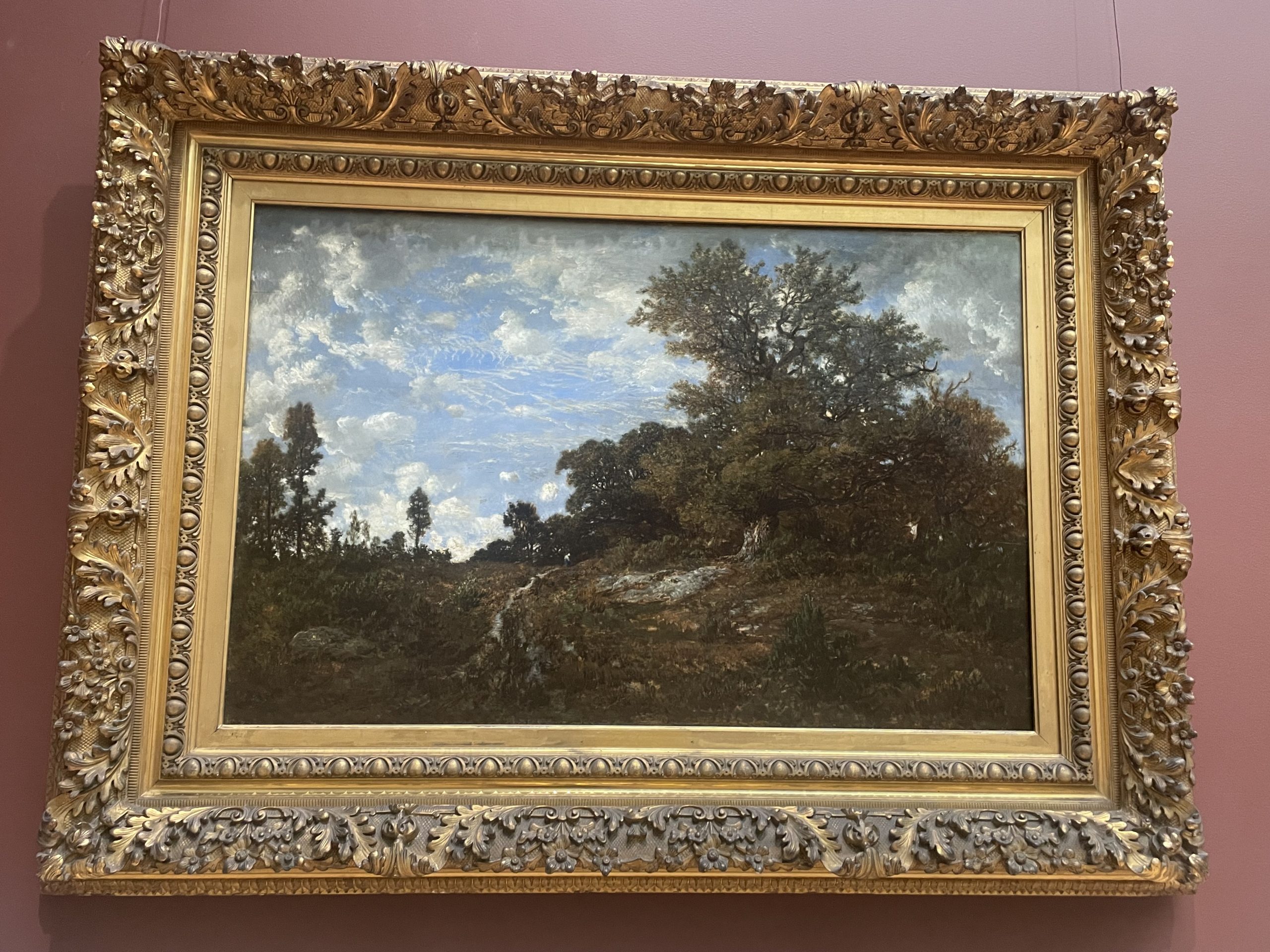
“The Edge of the Woods at Monts‑Girard, Fontainebleau Forest” by Théodore Rousseau (one of the Barbizon painters), 1852–54. One of several paintings of the forest in New York’s Metropolitan Museum of Art © Jen Flanagan
It was a radical idea at the time: that a forest could be worth saving simply because it moved people. But by 1830, these artists (along with early conservationists) successfully lobbied the French state to protect part of the forest from logging. So, Fontainebleau became not just the first protected forest in France, but the first in the world preserved for aesthetic reasons.
In 1861, Napoleon III expanded the protections, setting aside more than 1,000 hectares as a Réserve Artistique, a zone where no trees could be cut. It marked the beginning of modern landscape conservation.
Today, that spirit still lingers. What I’ve come to enjoy most is the quiet way the forest brings people into its rhythm. Take Laurent, for example.
When I first moved here, I came across his online listing for a guided bike ride through the forest. He had grown up in Fontainebleau, left for Paris, and returned to retire. The listing had been up for years, but I was the first person to reach out in a long time. He said he preferred it that way, offering something at a slower pace helped preserve what made it meaningful to him. Thanks to him, I found some of the best trails early on; routes I still use every week.
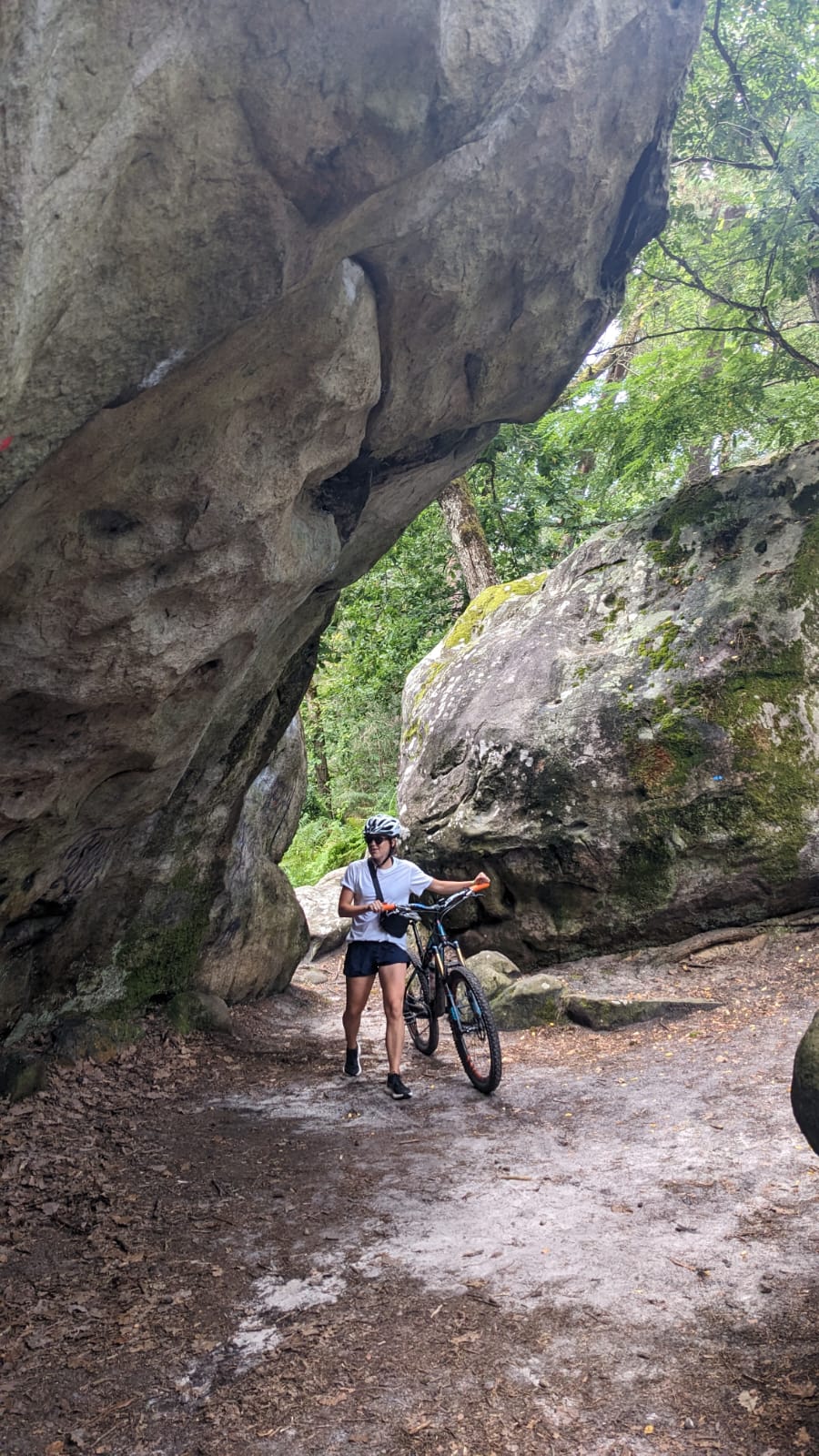
The first biking excursion in the forest with Laurent… too scared to ride my bike under the boulders at the time!
Over the past year, the forest has become part of my routine, not just for biking, but for hiking, trail running, and long afternoons on the golf course tucked inside. I’ve passed others bouldering, horseback riding, even practicing archery. Once you enter, there’s a rare luxury of anonymity that’s hard to come by in the town of Fontainebleau, where running into someone you know is almost guaranteed.
What I’ve enjoyed least are the sangliers (wild boars) that roam the forest. Another favorite animal of the royal hunt. I’ve been told they’re more afraid of me than I am of them, but I’ve never stuck around long enough to test the theory.
If you’re ever in Paris and looking for a quiet outing, I can’t recommend the Fontainebleau forest enough. And definitely check out Laurent’s Airbnb experience.Proud to now be a semi-official model for it.
The first biking excursion in the forest with Laurent… too scared to ride my bike under the boulders at the time!
How to Visit
From Paris, take the RER R line from Gare de Lyon to Fontainebleau–Avon station (about 40 minutes). From there, a short walk will get you to one of the forest’s many entrances. My favorite entry is behind the INSEAD campus on Route de l’Ermitage (into the Faisanderie area).
Apps like AllTrails and Komoot are helpful for finding trails. Or you can do what I usually do: step in, and let yourself get lost.
Read our other Carnet de Voyage entries here.
Jen is a regular contributor to FranceToday. Read her other articles here and follow her travel adventures on her personal blog: open.substack.com/pub/jenflanagan
Lead photo credit : Château de Fontainebleau, as seen from one of the forest trails © Jen Flanagan
Your email address will not be published. Required fields are marked *
